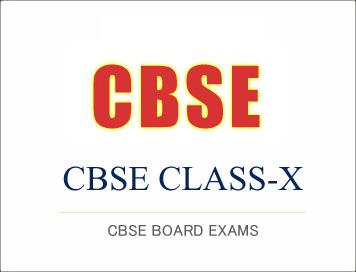
(Download) CBSE Class-12 2016-17 Sample Paper (Library & Information Science)
Duration: 3 hours
M.M: 80
General Instructions :
-
There are 28 general questions.
-
Question nos. 1-11 are very short answer questions carrying 1 mark each. Answer to these questions should not exceed 40 words.
-
Question nos. 12-22 are short answer questions carrying 3 marks each. Answer to these questions should be between 80-100 words.
-
Question nos. 23-28 are long answer questions carrying 6 marks each. Answer to these questions should not exceed 200 words.
-
All questions are compulsory. However, an internal choice has been provided in two questions of six marks. You have to attempt only one of the choices in such questions.
Q.1. What is Performance Appraisal?
Q.2. State the purpose of stock verification.
Q.3. What is the objective of stack maintenance?
Q.4. What do you understand by Energy Facet?
Q.5. Why are some class numbers of DDC kept in square bracket?
Q.6. What is the purpose of 'Due Date Slip'?
Q.7. What do you understand by "Value Added Information Services"?
Q.8. What is the objective of Inter Library Loan?
Q.9. Which software is needed to read an e-book in pdf form?
Q.10. What do you mean by Electronic Books (e-books)?
Q.11. Why do we need Unicode Compatible Library Automation Software?
Q.12. What is meant by user education? List four objectives of user education.
Q.13. What do you understand by Library Consortia?
Q.14. Briefly describe the 'personality', the fundamental category of colon classification.
Q.15. Write the schematic illustration of 2nd level of description described in AACR-2.
Q.16. Why is technical processing of a book essential?
Q.17. What is Current Awareness Service? Briefly describes its categories?
Q.18. Describe the process of providing Selective Dissemination of Information Service (SDI).
Q.19. How is ICT application in Libraries beneficial?
Q.20. Write three advantages of Library Automation.
Q.21. Write three merits and three demerits of Open Source Software.
Q.22. Explain the Boolean operators and their impact while connecting two keywords 'India' and 'Sri Lanka'.
Q.23. Describe different methods of stock verification.
Or
Describe various preventive measures adopted by libraries for preservation of documents against environmental factors. (any six)
Q.24. Briefly describe different functions of Circulation Section.
Or
Briefly describe different functions of Periodical Section?
Q.25. Explain the role of tables in the DDC.
Q.26. Enumerate and explain different data formats of MARC-21.
Q.27. What kind of skills and competencies should a Library and Information professional possess?
Q.28. How does the Administrator manage SOUL Library Automation Software using its Administration module?



